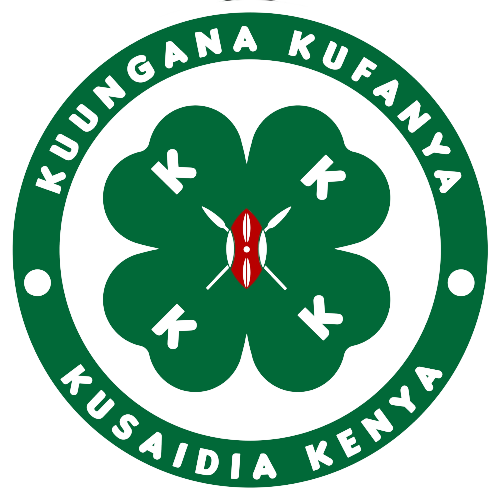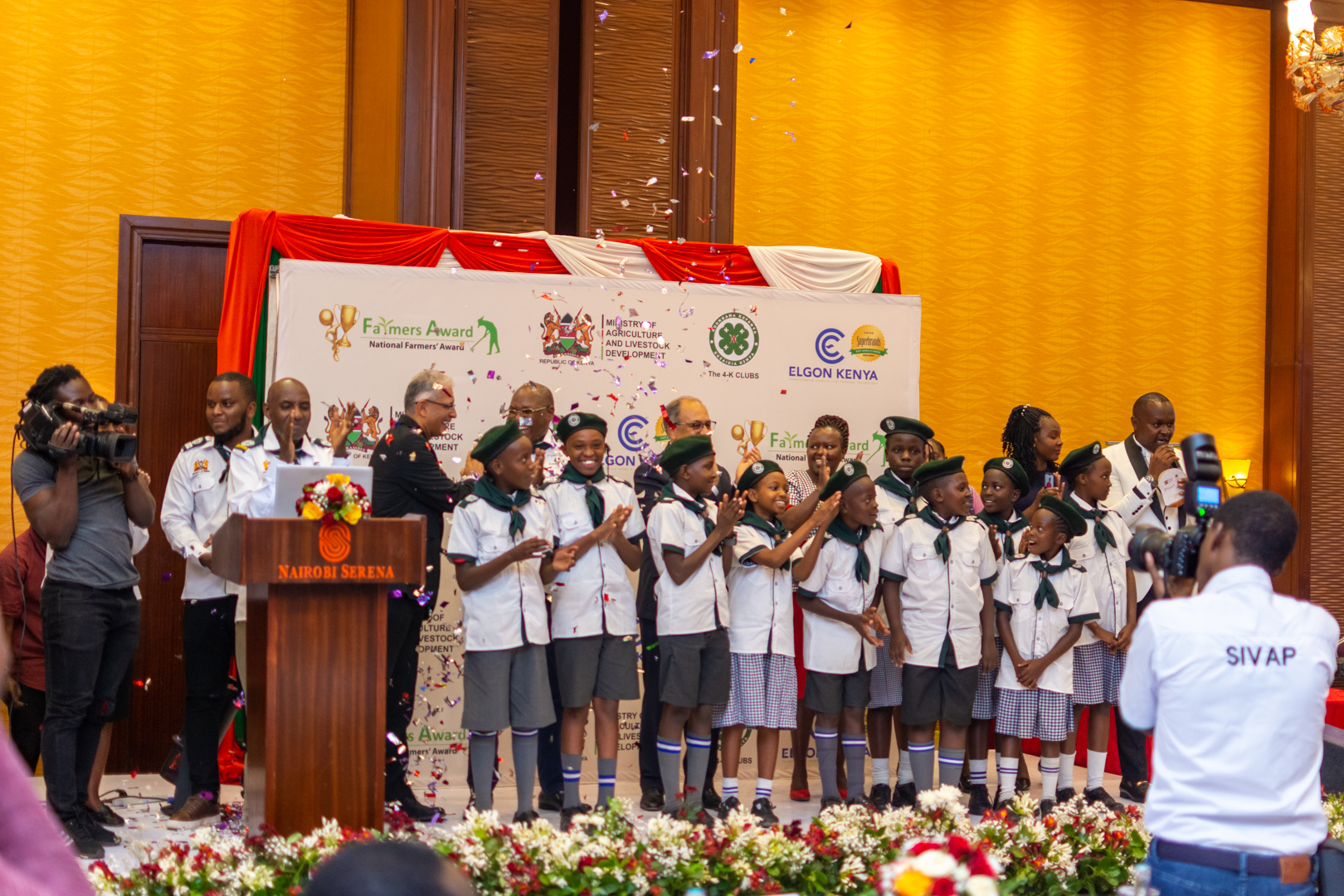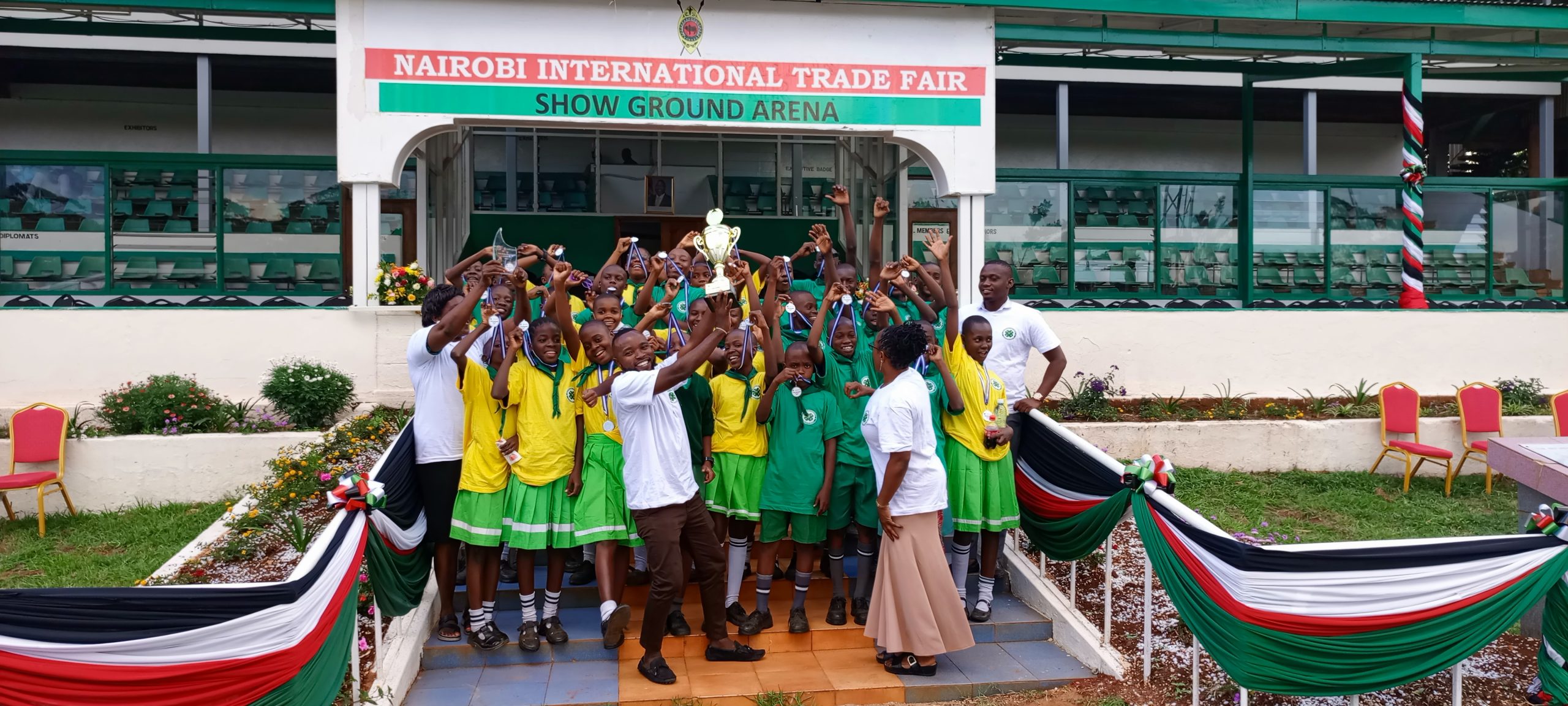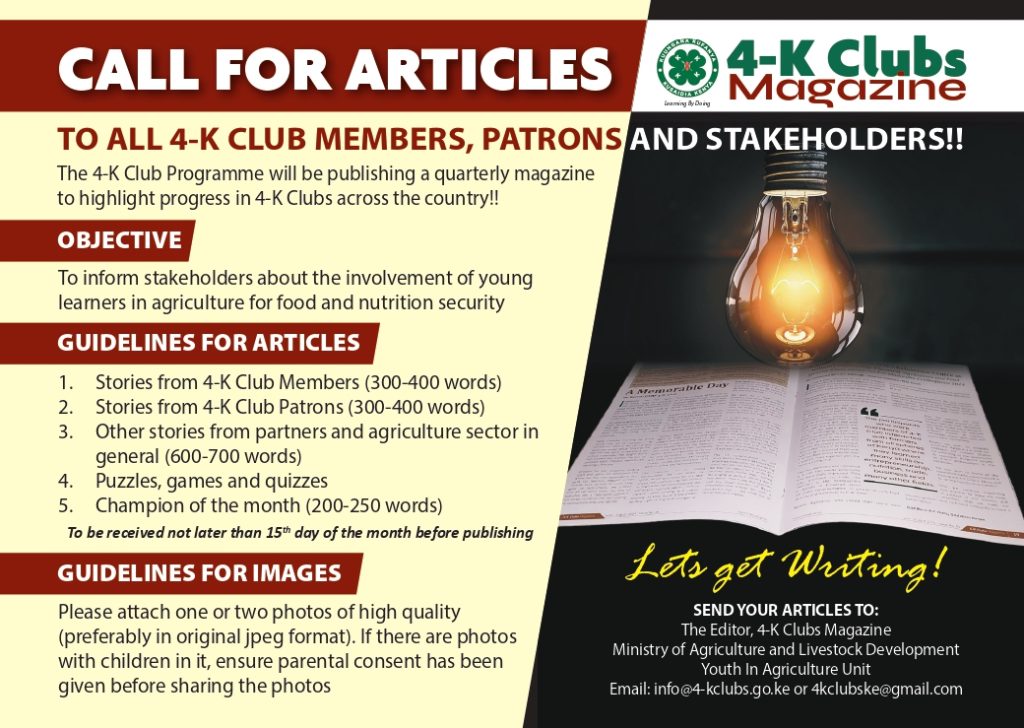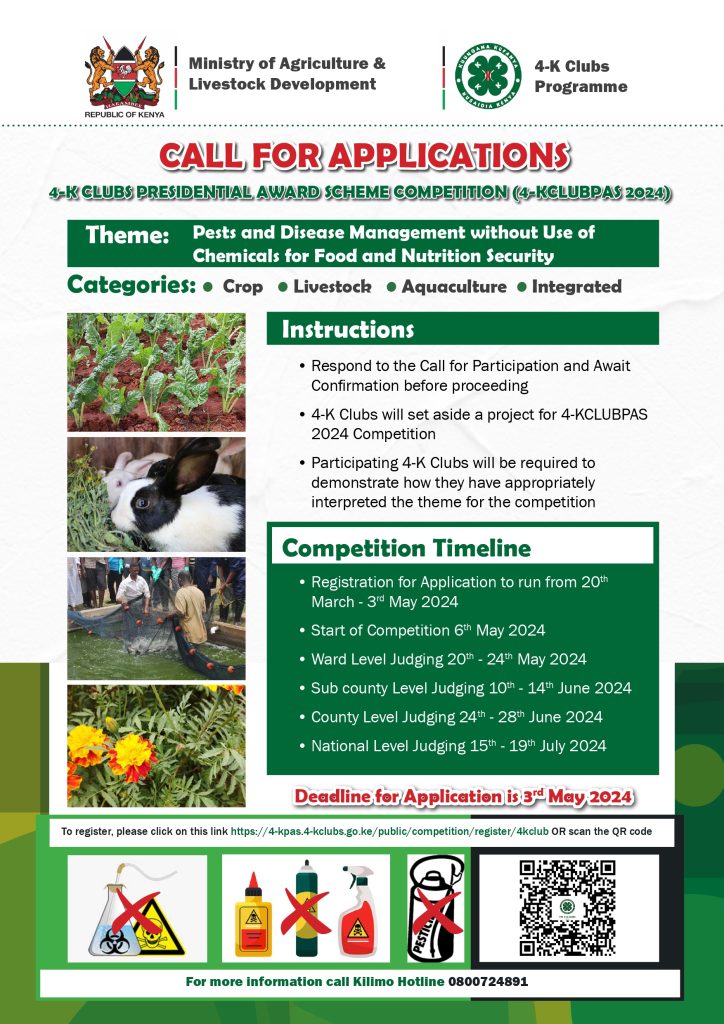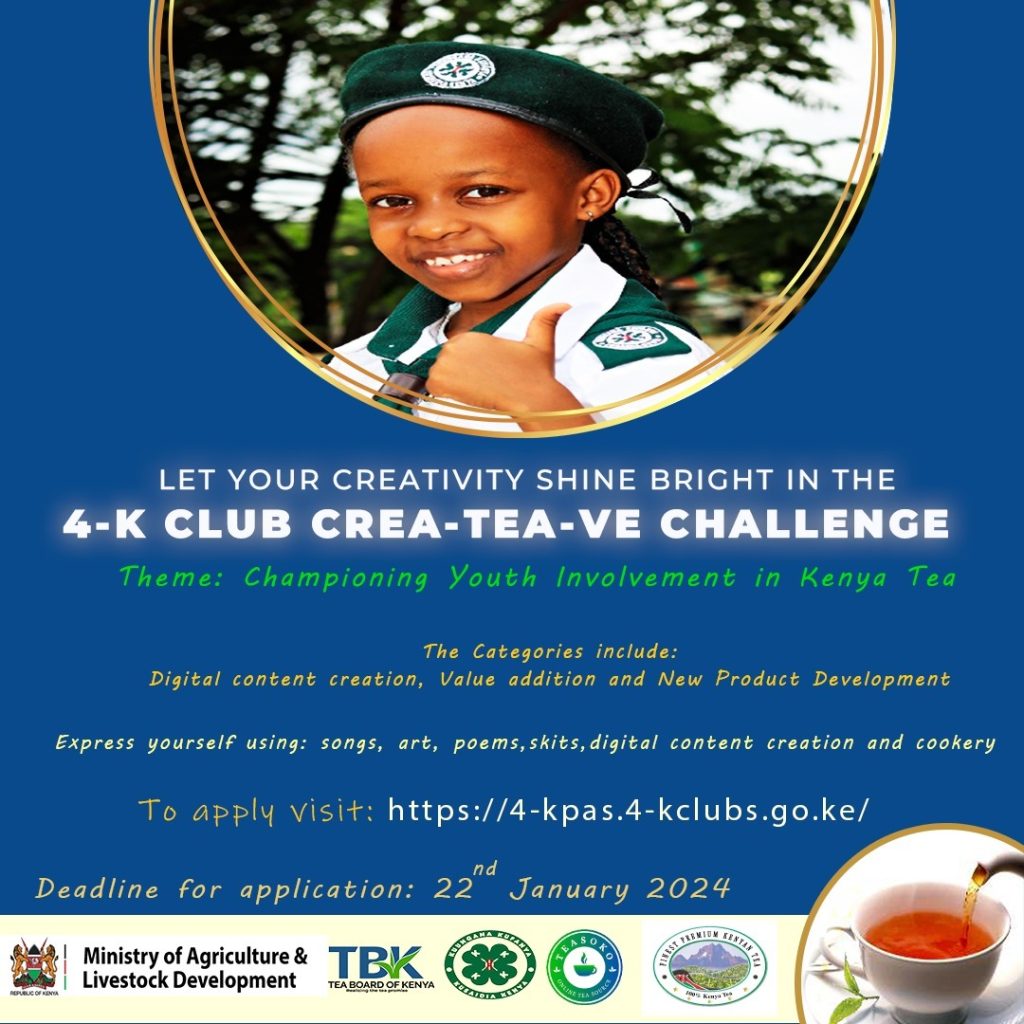WELCOME TO 4-K CLUBS KENYA
The 4-K Club programme in Kenya was founded in 1962 after a local leaders’ visit to the USA where they were exposed to various agricultural programmes including the 4-H.
The Kenyan leaders decided to adopt the 4-H concept and principles which were customized to 4-K Club for ownership and identity. The guiding principle is to empower the youth with Agricultural and life skills which will contribute towards better nutrition, health and higher standards of living.
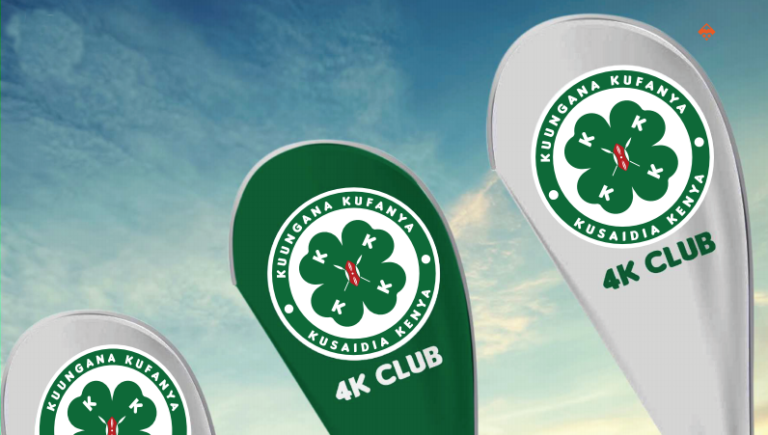
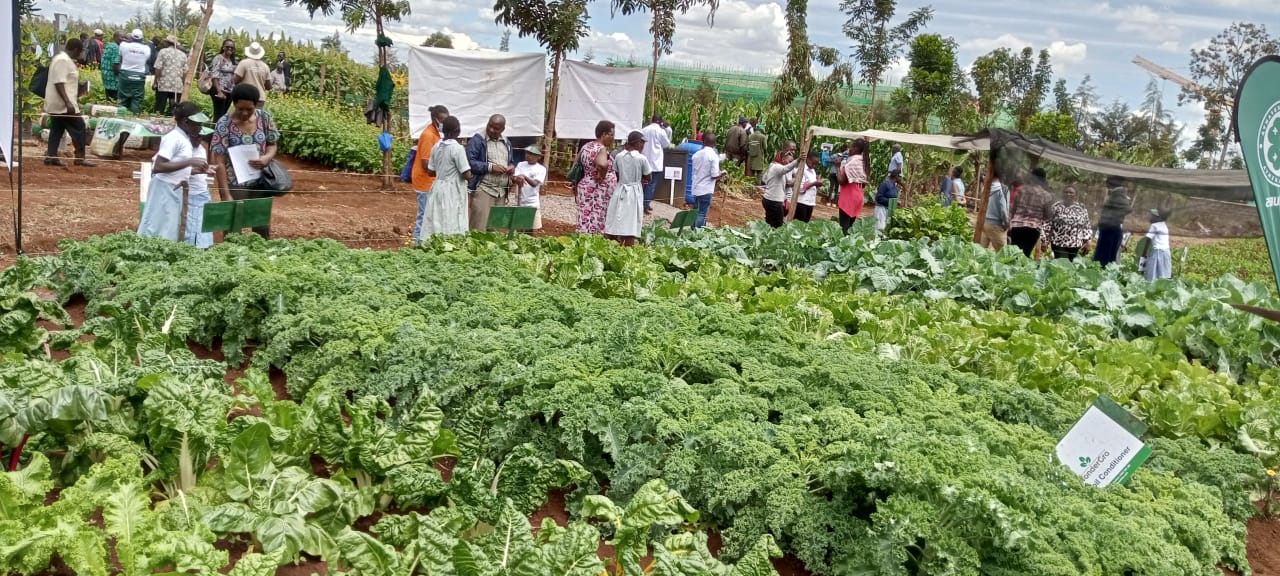
In Kenya, currently, there are about 1,900 registered 4-K Clubs found in primary schools with an estimated membership of over 200,000 countrywide.
In the wake of Competency Based Curriculum (CBC), it is envisaged that the 4-K Clubs will provide a holistic approach of Positive Youth Development (PYD) at home, school and the community by building on the strength of the youth as active agents to community development.
THE 4-K MEANING
KUUNGANA
UNITY of the Youth and Young Farmers as members of the club to foster growth and empowerment in the society.
KUFANYA
ENGAGING in doing work with one’s hands and mind in bid to meet the society’s present needs

KUSAIDIA
AID of the country by ensuring its progress through offering innovative solutions to national challenges.
KENYA
An Educated, Healthy, Self-reliant nation points to an assurance of prosperity.
4-K CLUB MEMBERSHIP
Any girl or boy aged between 8 to 15 years in primary school qualifies to be a member of the 4-K Club. No club fees are charged, but contributions can be made, for example to buy a 4-K Club badge or inputs for their own projects.
Members meet in any suitable place for example classroom, tree shade, school farm, or any other public place.
Members plan, reflect, share experiences, tour their projects and end up with recreation activities.
They engage in sports and games with other members, visit other clubs, exchange visits, have competitions with others, hold field trips to farms, agricultural stations, agricultural shows and other agricultural institutions of interest.
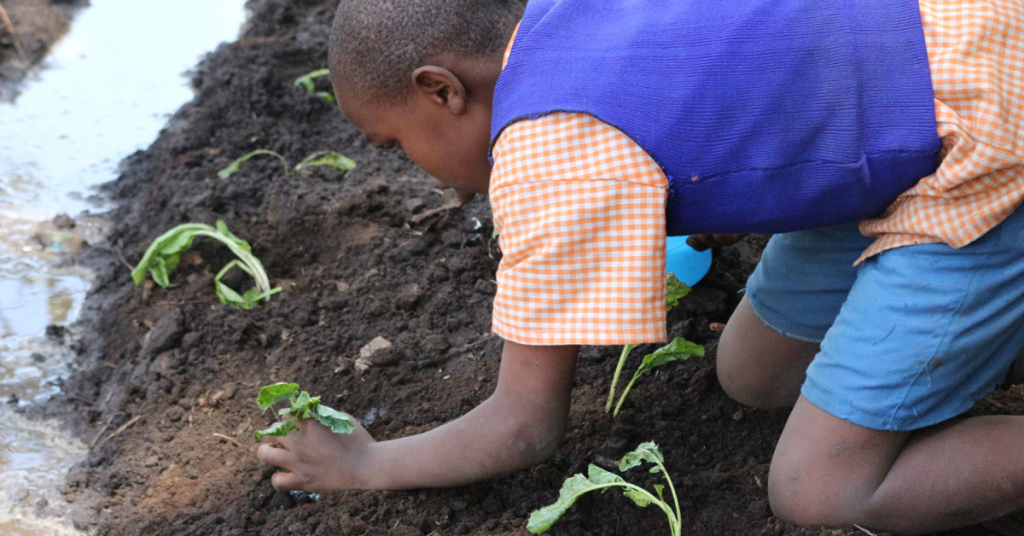
Latest News
Upcoming Events
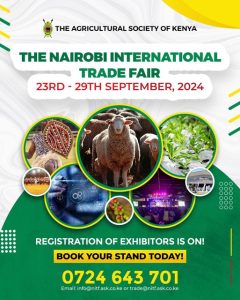
2023 NAIROBI INTERNATIONAL TRADE FAIR
Embark on a journey of agricultural excellence and trade innovation as the Agricultural Society of Kenya through the Nairobi Branch Chairman welcome you to this year’s Nairobi International Trade Fair. The event will be held from Monday 23rd September to Sunday 29th October at Jamhuri park Showground off Ngong Road.
